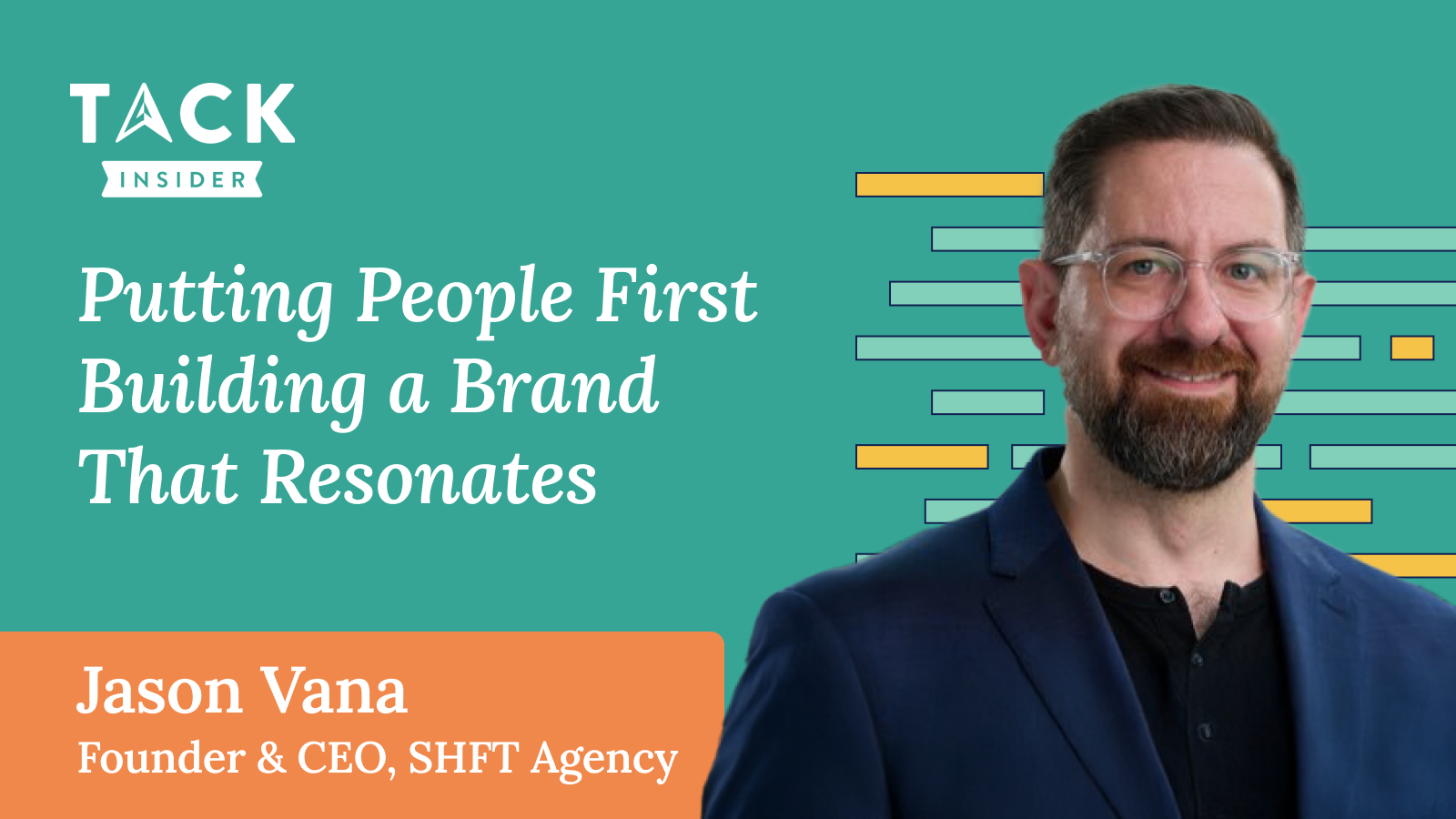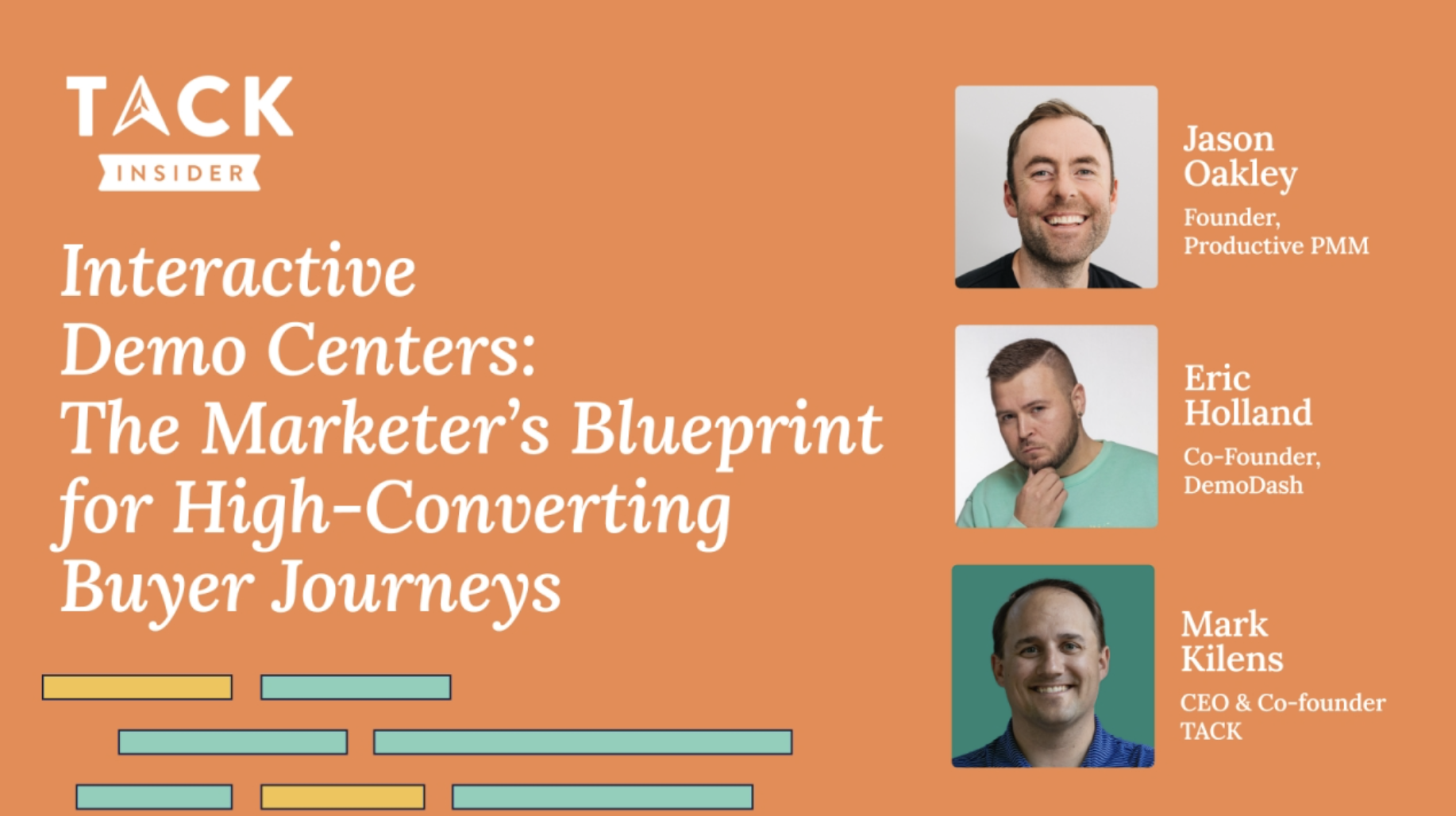Hosted by: Mark Kilens, CEO & Founder at TACK
Speakers: Jason Vana, Founder & CEO, SHFT Agency
Overview
If your brand isn’t attracting the right customers—or isn’t being felt consistently across your company, you’re not alone. Jason shares why most B2B brands fail to resonate and what to do instead. The answer isn’t more colors or campaigns—it’s customer insight. He offers a no-fluff roadmap for aligning your brand personality with your buyers’ deepest needs, from first click to post-sale.
Check out the full slides of the webinar
1. A brand is not what you build—it’s what your customers feel
Most companies think of brand as fonts, logos, or maybe a vibe. But as Vanna reminds us, a brand isn’t what you create—it’s the perception customers form based on every interaction with you. It lives in their gut.
- Your brand exists in your customers’ minds—not in your design files
- It’s shaped by every touchpoint: support calls, product experience, billing policies
- Inconsistency between message and experience destroys trust
- Real branding is company-wide, not just a marketing job
“A brand isn’t built. It’s influenced. And it’s owned by your customers.”
2. Knowing your ideal customers is your business cheat code
Buyer personas filled with demographics aren’t enough. Vanna argues that if your ideal customer profile can’t tell you what content to write or how to pitch, it’s useless.
To truly know your customers, you need to understand:
- What problems they’re trying to solve
- How those problems make them feel
- What outcomes they truly care about (not just efficiency)
- What would make them say, “Take my money”
- Their decision-making journey—and what slows it down
When Shift worked with a business consulting client, they discovered the customer’s emotional driver wasn’t just “wanting better processes”—it was feeling inadequate and stuck. Messaging shifted from efficiency to empowerment—and it landed.
3. Your brand personality should reflect your customers’ emotional needs
“Just be yourself” is terrible brand advice, Vanna says. A successful brand isn’t just your vibe—it’s a curated expression that speaks directly to what your customers are looking for in a solution partner.
To craft a resonant personality, ask:
- What is your customer’s baseline personality?
- How do they feel during the challenge?
- What kind of brand personality would comfort, guide, or excite them?
Then, map these against the 12 Jungian brand archetypes (e.g., Hero, Rebel, Sage) and choose the one that naturally fits both your company and your customers’ expectations.
For Shift, this meant embracing the “Outlaw” and “Hero” personas: challenging conventional advice while guiding founders to clarity.
4. Get company-wide buy-in—or your brand won’t stick
Many branding efforts fail because they stop at marketing. According to Vanna, the most successful brand strategies are cross-functional. They involve input—and implementation—across sales, operations, support, and leadership.
Tactics that help:
- Host collaborative brand workshops with representatives from every department
- Share brand insights and messaging drafts company-wide and invite feedback
- Start with small operational tweaks (e.g., onboarding updates) to prove impact
- Use customer interviews to highlight internal friction and missed opportunities
One Shift client had high churn due to perceived cost—until interviews revealed customers didn’t realize five people were working on their account. A $5 onboarding flyer fixed that and eliminated churn.
5. Use differentiation to stand out—especially in saturated markets
If you’re entering a new market or surrounded by lookalike competitors, differentiation is your moat. But it’s not about sounding clever—it’s about finding the gaps your competitors overlook.
Vanna recommends:
- Analyzing competitor messaging and tone
- Noticing what your ideal customers complain about in reviews and forums
- Emphasizing how your delivery model or experience is uniquely valuable
For one client, the breakthrough wasn’t in features—it was positioning themselves as the consultancy that works directly with employees (not just leadership), saving founders 20 hours a week. That shift reframed everything.
Pull quote
“Don’t build a brand around who you are—build it around who your customers want beside them when things get hard.”
Key Takeaways
- A brand is the sum of every customer interaction—not just a visual identity
- Deep customer insight (beyond demographics) is the foundation of great branding
- Your brand personality should be intentional and mapped to customer emotion
- Involve all departments early—brands die in silos
- Small changes based on real insight can drive major results





